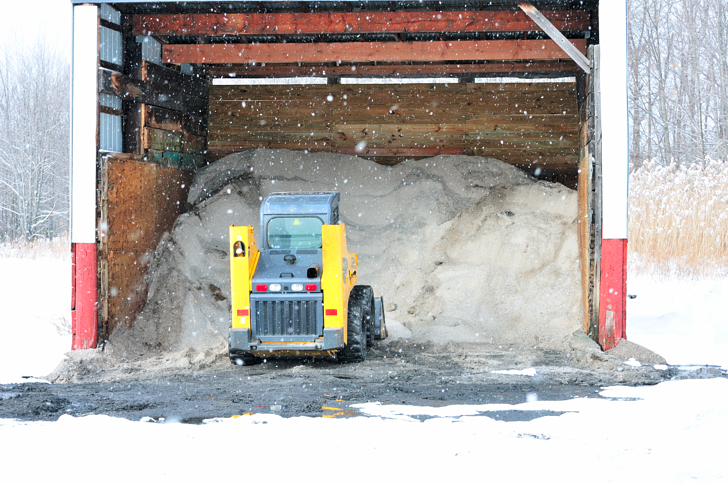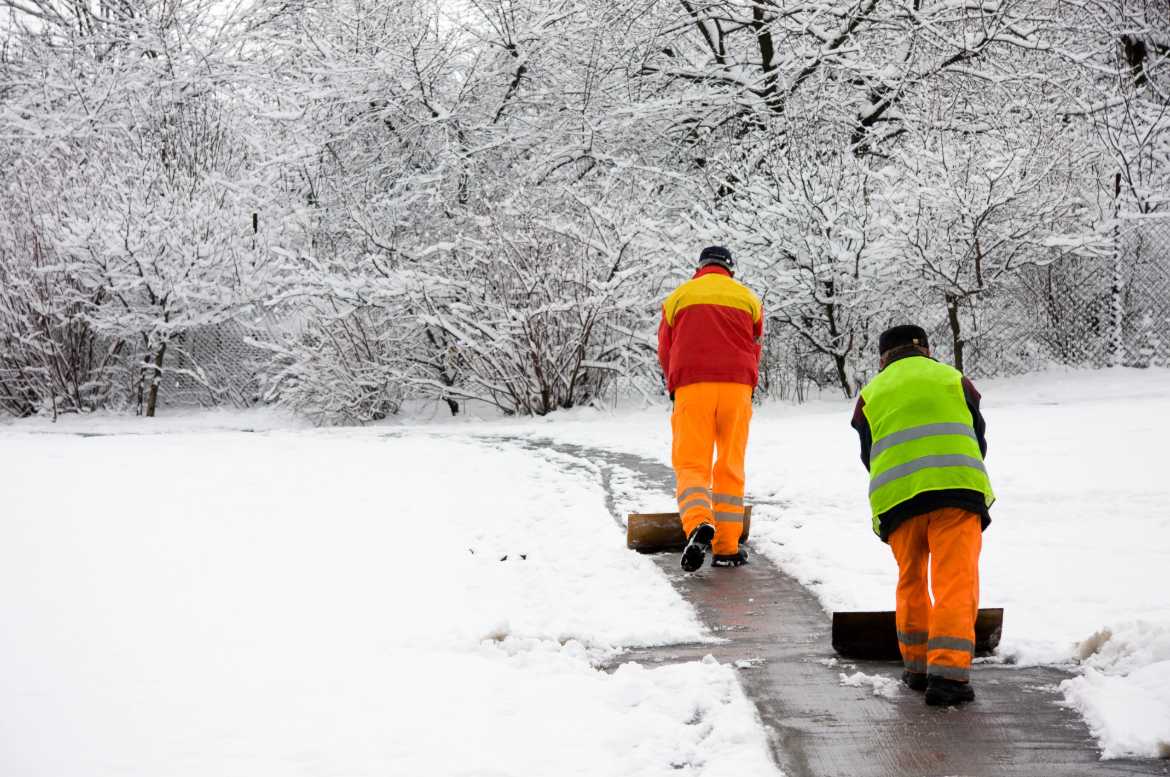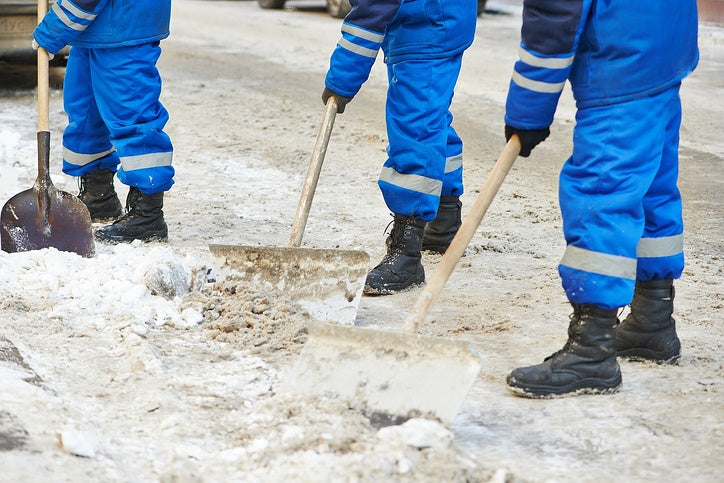
Keeping walkways and parking lots safe for pedestrians during inclement weather is a challenge for every facility. Many organizations tackle snow and ice management by hiring professional snow removal companies. These contractors usually combine the use of plows with chemicals designed to assist in melting snow and ice, or to make them easier to remove. Unfortunately, these chemicals create serious problems both for the property itself and the environment.
Without question, the most frequent form of ice prevention is sodium chloride (commonly called road or rock salt), and any contractor or manager who uses salt can see how highly corrosive it can be to most surfaces. However, while it’s easy to recognize the damage salt causes to the pavement, many don’t realize that this is only part of the problem. More concerning is the damage to the environment. As the snow and ice melts or is scattered by snowplow trucks, these chemicals make their way into ground- and surface water and storm drains. The chloride component of the rock salt is particularly toxic to aquatic life. The United States Geological Survey has reported that manystreams in the country have chloride levels that exceed those deemed safe by the U.S. Environmental Protection Agency.
In addition, the runoff infiltrates the soil, which is harmful to wildlife and vegetation. Direct contact with plants via salt sprayers results in salt injury to buds and twigs. In most cases, the damage will not be apparent until early spring, when plants fail to bloom.
Some organic-based chemicals, including sodium and calcium acetate, have been developed in an effort to reduce environmental impact. However, a Norwegian study found that the degradation of these organic agents causes other problems—specifically, reduced oxygen to the soil and an increase in the release of heavy metals.
The chemical impact to the environment as well as to ground surface and landscaping components is a significant concern for facility managers, yet keeping walkways clear for visitors is essential to proper snow and ice management. There are solutions available that are completely safe for the environment as well as for the ground surface and nearby vegetation. A shield of protection on top of the snow or ice-covered pavement, such as industrial strength outdoor heated floor mats, can be a practical, inexpensive, and eco-friendly way to keep your walkways clear, and stop snow and ice from becoming a hazard to your visitors.


